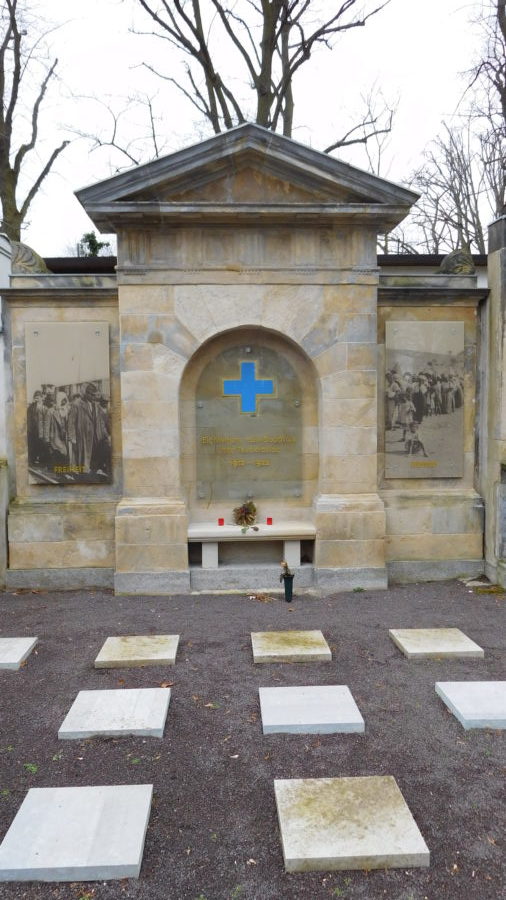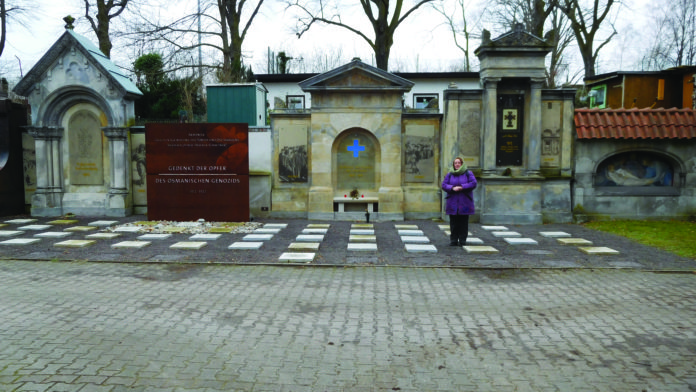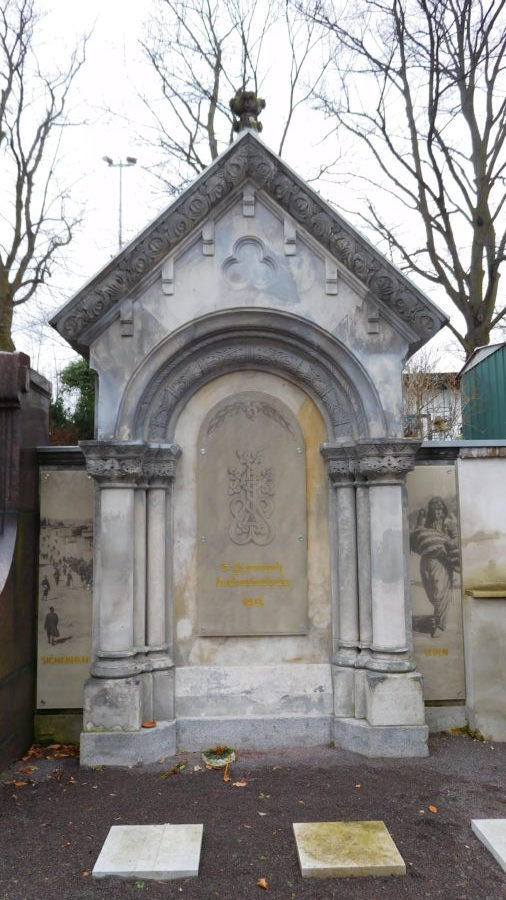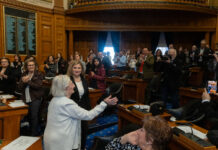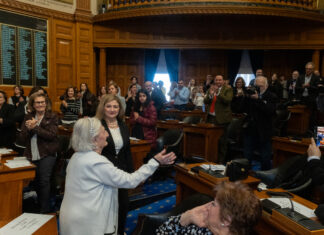By Muriel Mirak-Weissbach
Special to the Mirror-Spectator
BERLIN — It was a bitter cold day in mid-February, with a strong wind that chilled to the bone. As we walked from the bus stop and entered the Luisenkirchhof III cemetery through the huge gate, I thought about the women and children being deported from their homes in Ottoman Empire over a hundred years ago, and what immense suffering they must have faced as they wound their way through inclement weather, on their march toward death.
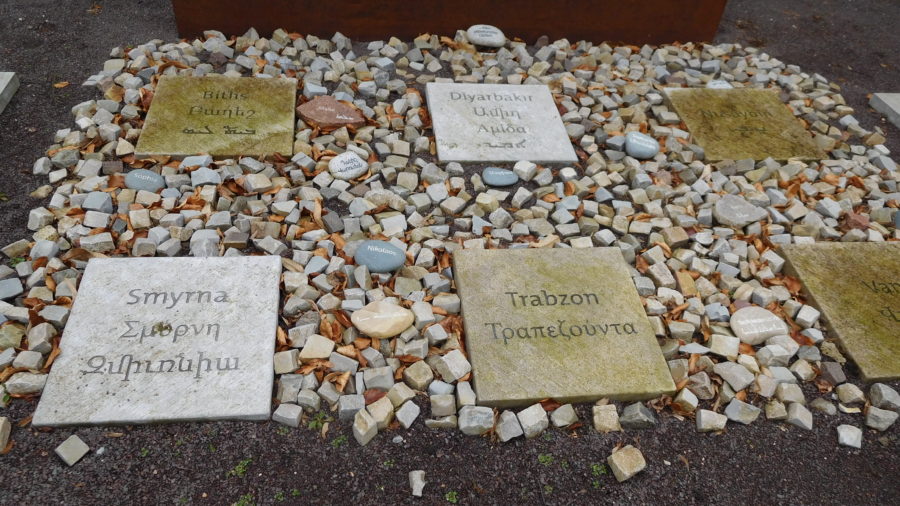
My guide and companion, Prof. Tessa Hofmann, was as warmly bundled up as I was, so we could go on walking up to the central chapel and beyond, with no fear of freezing. On the other side of the chapel, the path continued until we reached a façade of massive altars, which stretched out to the left and right in front of us. The three altars in the middle stood solemn and dignified, each with a cross of a different kind placed in the arch. The first altar on the left with its graceful khachkar must be the house of the Armenians; the next had a cross with arms of equal length to designate the house of the Greeks from Asia Minor, Pontos and Eastern Thrace; and the third displayed the cross of the Aramaens, Assyrians and Chaldeans.
Placed between the first and second altars is a huge plaque with the names of these Christian communities, and the inscription: “Commemorate the victims of the Ottoman genocide 1912-1922.” On the lateral wings of each of the Altars of Remembrance are ‘icons of annihilation,’ scenes from the genocide. The design of the memorial was inspired by the principle of Christian medieval sacral architecture: “Unity in diversity.” And the cross, in its several variations, stands as the universal Christian symbol of hope and resurrection.
